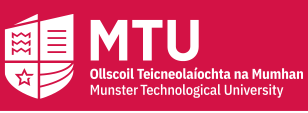Date of Award
2023
Document Type
Doctoral Thesis
Degree Name
Doctor of Philosophy
Department
Biological Sciences
First Advisor
Dr Karen Finn
Second Advisor
Dr Brigid Lucey
Abstract
The rapid development of the Space industry and associated technologies over the past decade is leading to the inevitable consideration of establishing human-based colonies on extra-terrestrial bodies such as the moon and Mars. With Mars being the focus of not only this body of work, but current New Space Age travel (NASA and SpaceX), a significant issue posed by Martian colonists includes establishing a safe and sustainable food source. Owing to its constantly evolving prehistoric landscape, the soils of Mars are contaminated with sodium perchlorate, a water-soluble salt that is toxic to humans, leftover from once inferred brine seeps that flowed as rivers that carved out the topography of prehistoric Mars. Perchlorate contamination is not just an extraterrestrial issue, it is also a common pollutant found on planet Earth as a by-product of agriculture, chemical manufacturing processes and munition manufacturing too. Crops, if grown within perchlorate contaminated soils, pose the risk of inadvertently poisoning consumers upon ingestion as a result of perchlorate bioaccumulation from soil to plant. The solution to this issue, as explored throughout this body of work, comes in the form of examining the microbial bioremediation of sodium perchlorate. To enable this, Space-compatible biosystems, spanning from perchlorate reduction rates (Chapter 6: The Quantification Of Sodium Perchlorate Reduction Via Microbial Action By Means Of Individually And Co-Cultured Bioremediation Strains Using Raman Spectroscopy In A Low Nutrient Environment) to microbial growth/survival in the presence of perchlorate (Chapter 5: Assessment Of Toxicity Of Sodium Perchlorate On Growth Of Bioremediation Microbes When Grown In High And Low-Nutrient Environments) and employment within a Bioxiv Housing Unit, starting at the microbial level were identified. The extreme conditions of outer space pose an environmental challenge for any form of life. Therefore, part of this research examined how these microbes behaved under terrestrial and Mars-like biotic and abiotic conditions (Chapter 3: The Effects Of Freeze-Thaw And UVC On Microbial Survivability In A Selected Mars-Like Environment), including biofilm formation (Chapter 4: Determination And Examination Of Optimal Parameters For Biofilm By Examining The Influence Of Cell Concentration, Inoculum Volume, Media Type, Co-Culturing, And Sodium Perchlorate On Biofilm Yield). Multi-disciplinary forms of detection and sampling methods were assessed (Chapter 2: Misdiagnosis Of SARS-CoV-2: A Critical Review Of The Influence Of Sampling And Clinical Detection Methods) to aid in the understanding of how bioremediation activity could be detected/quantified (Chapter 1: A Review Of The Roles Of Microbes In The Modern World And New Space Age And A Critical Analysis Of Their Detection Methods). This information guided the novel detection/sampling methods used to determine the bioremediation activity of the candidate strains when employed within novel 3D printed bio-housing units (Chapter 7: Sodium Perchlorate Bioremediation: The Use Of Raman Detection Systems To Observe The Applications Of 3D Printed Bio-Capsules And Genetically Modified E. coli ATCC 25922 In The Reduction Of Sodium Perchlorate From Martian Soil Analogues). Furthermore, it was observed how genetic manipulation can promote higher degrees of bioremediation than their wild-type equivalent (Chapter 8: Sodium Perchlorate Bioremediation: The Use Of Raman Detection Systems To Observe The Applications Of 3D Printed Bio-Capsules And Genetically Modified E. coli ATCC 25922 In The Reduction Of Sodium Perchlorate From Martian Soil Analogues). As such, the varied roles of environmental microbes and their continued relationship with humankind was examined, to take the knowledge from the past and present and to carry it into the future, including on Earth and distant planets.
Recommended Citation
Keaney, Daniel Joseph, "Characterisation of Selected Microbes in Terrestrial and Simulated Extraterrestrial Habitats: Human Health and Environmental Applications" (2023). Theses [online].
Available at: https://sword.mtu.ie/allthe/832
Creative Commons License

This work is licensed under a Creative Commons Attribution 4.0 International License.
Access Level
info:eu-repo/semantics/openAccess


